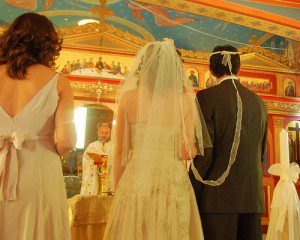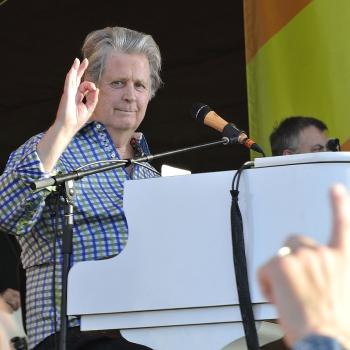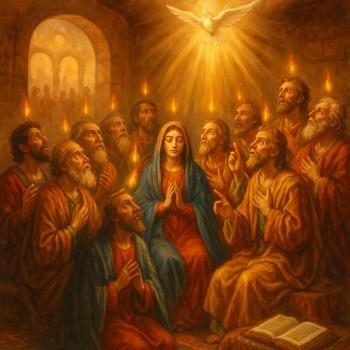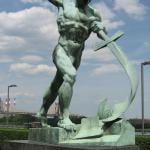In Search of the Miraculous: Reflections on Miracles and the Wedding Feast at Cana
Lectionary Reflections for The Second Sunday after Epiphany – January 20, 2013
John 2:1-11
Wondrous acts have been attributed to spiritual leaders, ancient and contemporary. Gurus, shaman, and healers are, according to followers and, occasionally external observers, able to perform psychic surgery, change weather patterns, and effect physical transformations at a distance. While typically these events occur in non-industrial environments, unsullied by the modern world view and enlightenment skepticism as well as appropriate scientific examination, the reports nevertheless give us pause as well as provoke cynicism and charges of fraud. Still, despite our skepticism, adherents claim to have experienced physical as well as spiritual transformation. Incurable cancers are cured and limbs are lengthened. In this spirit, the transformation of water into wine at a wedding feast in Cana needs tobe addressed if it is to read in church. Here Jesus performs his first miracle and takes his place in a long line of magicians or shaman who are able to change cells as well as souls, evoking radical changes in the basic elements of existence. Such events need theological reflection to avoid the extremes of skeptical disbelief and sensationalist affirmation. (For theological perspectives on Jesus’ healings, see Bruce Epperly, Healing Marks: Spirituality and Healing in Mark’s Gospel and God’s Touch: Faith, Wholeness, and the Healing Miracles of Jesus)
While the ability to transform nature is not unique to Jesus, the adventurous preacher cannot be content with dismissing the miracle story as merely a fabrication on the part of Jesus’ followers. This story is part of a larger fabric of stories that point to Jesus as God’s beloved child and savior. Moreover, assuming the good faith of Jesus’ first followers, this story and the other healing and transformational stories must have been rooted in remembrance of Jesus’ extraordinary energy and transformational power. In an interdependent, holistic universe in which mind, body, and spirit fold into one another and action can occur at a distance, Rudolf Bultmann’s demythologizing approach to Jesus’ healings and nature miracles is not sufficient as an explanation. Yes, souls were transformed, as Bultmann affirms, but this does not preclude changes at the cellular level as well. Studies on meditation, religious commitment, non-local intentionality, and prayer indicate that religious actions can shape bodies as well as minds.
Traditionally, miracles have been understood as violations of the predictable laws of nature, brought about by God’s interventions in natural systems to achieve God’s will. Traditional and popular understandings assume that God is an external power, working on materials that are otherwise godless in nature. Such events are by definition “supernatural” in nature. They are also arbitrary insofar as these divine interventions occur in some places and not others, responding to some needs but not to other equally important needs. This apparent arbitrariness begs questions of God’s will and theodicy and provokes reflections on the absence as well as presence of God in pivotal moments of our lives. Surely if God’s power can change water into wine, thus, enhancing a family’s celebration, God could have also diverted the bullets at Sandy Hook or struck the shooter down on his way to the school. Although we cannot fathom the mysteries of God or the universe fully, we have the right to question theological and popular explanations of events. Theology pops up in the aftermath of tragedies: unable to explain the Sandy Hook murders, two cable correspondents spoke of the mystery of God “taking” the children, implying that there had to be a reason for the slaughter of these innocents.
Is it possible that we live in an utterly miraculous world of galaxies, black holes, T-cells, babies, and acts of love and fail to see the miraculous within the ordinary, quotidian mysteries of daily life. (Kathleen Norris) Isaiah proclaims the whole earth is full of God’s glory. The Gospel of Thomas proclaims “cleave the wood and I am there.” The apostle Paul, invoking Greek philosophers, asserts that God is the reality within whom we “live and move and have our being.” In such a world, miracles are “acts of power” or manifestations of “quantum leaps of energy,” in accordance with deeper laws of dynamic natural processes within which we are shaped and also can shape. Miracles reflect divine intentionality at work in regular, multi-factorial causal contexts. Aligned with a deeper wisdom, apparently miraculous events can occur but they are not the unilateral actions of an external omnipotent God or the unilateral reflections of our own states of consciousness; they occur in a multifactorial context in which intentionality and healing-transforming energy is at work relationally and persuasively within a multitude of other influences. Divinity is within, not outside of, the normal cause and effect process and must, like an artist, work with rather than against the natural characteristics of events.
So, can water be changed into wine? Is God concerned with weddings, sexuality, and procreation (obviously connected in first century celebrations)? Perhaps, yes, in both cases. Masaru Emoto’s experiments suggest that our thoughts, prayers, intentionality, words, and music can transform the structure of water crystals. If this is proven to be the case, then it appears that there is a resonance between human consciousness and non-human, non-conscious realities (such as water crystals). Jesus’ attunement with God, accordingly, could transform water into wine “naturally” and in accordance with the deeper characteristics of water molecules. On the larger spectrum, weddings, sexuality, and procreation matters to God, the story suggests, not as a cosmic moralist or killjoy, but as a wisdom seeking celebration, unity, and love in everyday life.
Today’s passage invites us to push the boundaries of our imaginations and impact in the world. Are we thinking too small? Do we have energies and powers that can change our lives, the church, and the world for the good? Does our companionship with God really make a difference in God’s quest to heal the world? If so, then, let’s think big, dream big, and act big (humbly and wisely) to transform the world.
Photo Credit: Flickr, Creative Commons, RobW_














